
Among the Amazon rainforest mammals we find monkeys , cats , rodents, marsupials, canids, foxes, bears, tapirs , bats, dolphins and manatees. All of them threatened by the activities of another mammal: the human being.
The mammals are mainly identified as warm-blooded animals whose mothers have mammary glands through which they provide milk to their children.
Biodiversity Facts about the mammals in the Amazon rainforest
The number of mammal species in the Amazon rainforest is not very numerous compared to the figures recorded for fish and insect species.
In the Bolivian jungle, 67 species of mammals have been verified.
In a single hectare of the Yasuní National Park, in the Ecuadorian Amazon there are 173 species of mammals.
In Peru , studies report 263 mammals from the Amazon.
In the Brazilian Amazon , 399 species of suckling animals are recognized, of which 58% are considered exclusive to the region (Paglia et al. 2012).
While some authors total 420 mammals for the Amazon basin , the WWF website (fund for the protection of wildlife worldwide) indicates that the total number of mammals in the Amazon amounts to 427 species.
Another study proposes that biodiversity in the Amazon rainforest in the case of mammals has been overestimated and is a myth, because according to that research, another region in South America has a greater diversity of mammals, as is the case of dry lands or arid (Mares, 1992).
The Amazon basin presents high percentages of diversity of mammal species and, at the same time, a low population density of them in a given region.
Amazon mammal sighting
Mammals in the Amazon are not easily observed , since most of them have nocturnal habits and are subjected to constant harassment by hunters.
Videos of Amazonian mammals captured with camera traps
Fortunately, with the use of camera traps, it is now much easier to record and estimate their populations.
Here we leave you a couple of videos where some Amazonian mammals are recorded with these cameras:

Likewise, its distribution on the Amazon rainforest is determined by the organization of the biomass of the plants (food and shelter), and the availability of water, in terms of the seasons of emptying of rivers and flooding.
Below we will describe some of the mammals found in the world’s largest jungle , so come with us to learn a little more about them.
March 8, 2020
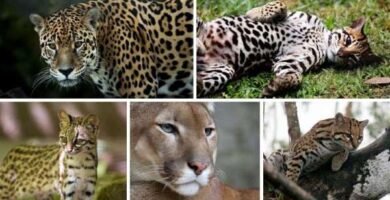
Cats of the Amazon Rainforest
March 18, 2020
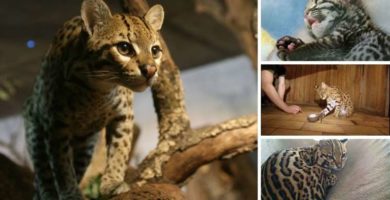
Ocelot (Leopardus Pardalis)
March 13, 2020
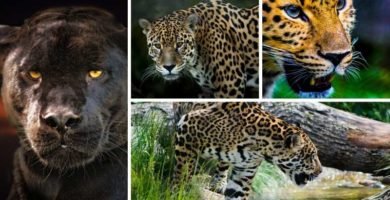
Jaguar (Panthera Onca) the King of the Amazon Rainforest
The most representative feline of the Amazon is the Panthera Onca (Otorongo) known as jaguar , which usually has yellowish fur with black spots or completely black, and can measure up to 2 meters and weigh up to 120 kg.

The jaguar, like the Puma ( Puma concolor ) , are feline mammals with solitary habits, their gestation periods usually last three months and they give birth to one to four offspring per litter.
Another of the cats that live in this rainforest is the Ocelot ( Leopardus pardalis ) , a species of medium-sized feline weighing between 15 and 20 kg. It is the third largest cat after the jaguar and the puma.

We can also mention the Yahuarundi (Yaguarondi), this feline reaches a length of 1.20 meters and a weight of 10 kg. It has a long and slender body, with a small head and ears, and short legs. It is reddish brown or black, without spots.
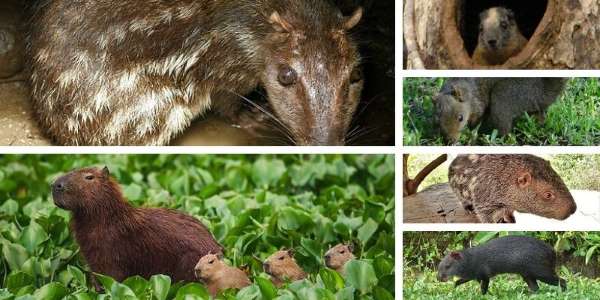
Amazon Rainforest rodents
Capybara , capybara, capybara are some of the names by which the (Hydrochaeris hydrochaeris) is known, the largest rodent (1 meter) and weight (60 Kg) in the world.

This mammal from the Amazon lives in flooded areas, its head is small, with rough fur, colored between yellowish and reddish brown. Its gestation period is four months and it gives birth to 2 to 8 pups.

Squirrels also inhabit the Amazon : Shitipu known in some areas as Ardita and the little squirrel (Microsciurus flaviventer). Both feed on seeds and nuts .
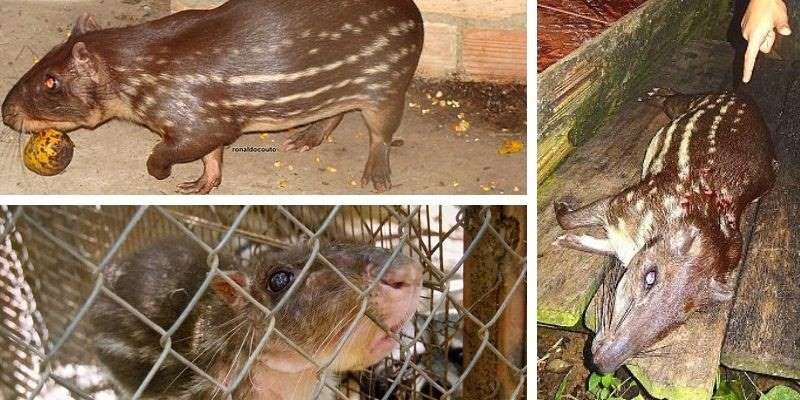
Lowland Paca or Agouti Paca (Cuniculus paca)
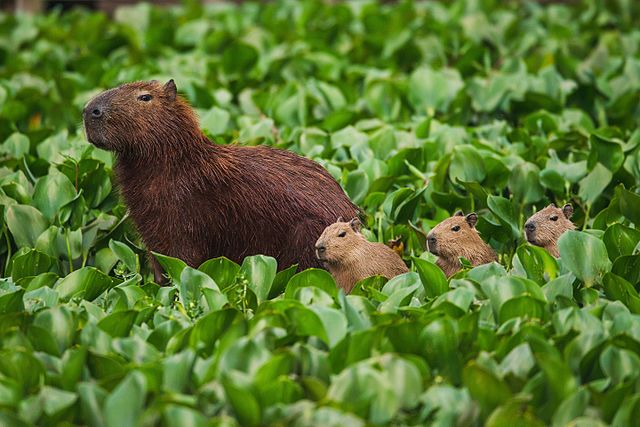
Capybara, chigüiro
Dasipodidae
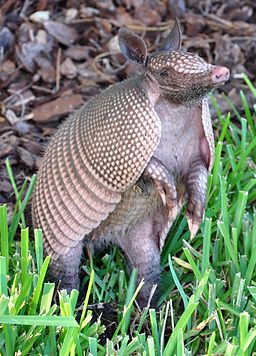
Another animal present in the Amazon sometimes confused with a rodent is the armadillo ( Dasypus novemcinctus ) and the giant armadillo ( Priodontes maximus ) both of which are dasipodids . They are characterized by having a slightly flexible, semi-oval shell, with a very long tail and short limbs and very small legs.
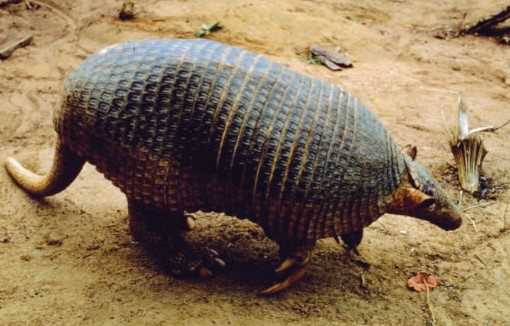
Giant Armadillo – The Armoured Beast of the Amazon Rainforest
Aquatic mammals of the basin
One of the largest aquatic mammals is the Manatee (Trichechus inunguis) , which can measure up to 4 meters long and weigh close to 500 kg. Its body is gray, with white spots on the belly.
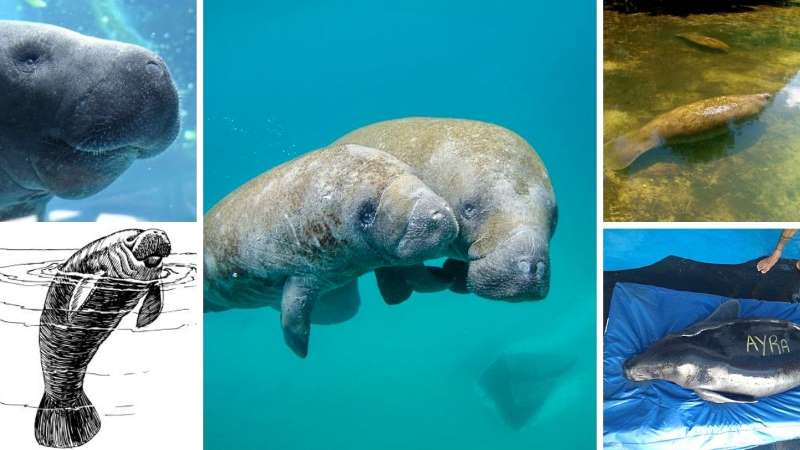
The Amazonian manatee (Trichechus inunguis)
This mammal inhabits the murky, slow-flowing waters of the Amazon and its tributaries, feeding mainly on surface vegetation such as herbs and fish .
Two species of manatee are found in the Amazon basin, at least in Colombia and Venezuela : T. inunguis, or Amazonian manatee, and T. manatus, or West Indian manatee .
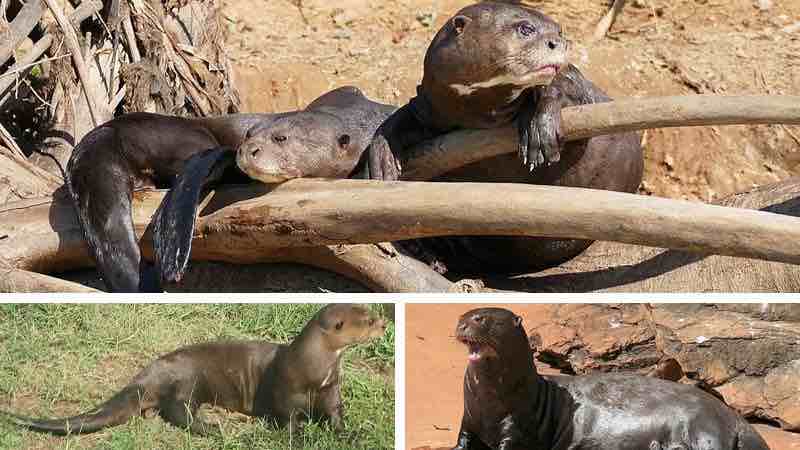
Giant Otter: size, facts, habitat, diet and more
In addition, within the species of aquatic mammals are the Northwest Otters (Lutra longicaudis, L. annectens, L. inarum) and the Giant Otter (Pteronura brasiliensis) both protected for being in danger of extinction.
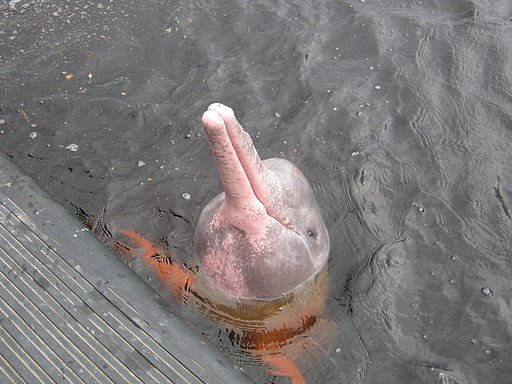
Amazon River Dolphin – Facts, Diet, Habitat, Species and more!
Another of the mammals that inhabits the Amazonian rivers is the Dolphin (Inia geoffrensis). Some also call them river dolphins. It is the largest of the plastinitidae family, a family of dolphins that lives only in fresh water.
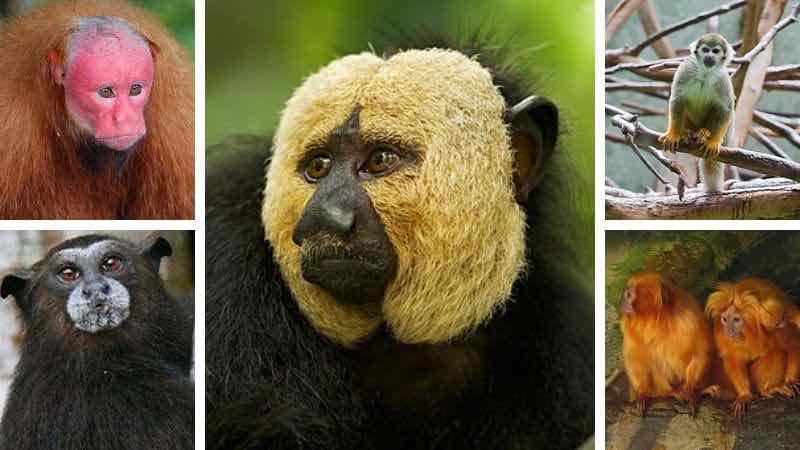
12 Amazon Rainforest Monkeys – Endangered Species ⚠️
A vast variety of monkeys inhabit the Amazon jungle, among which we can mention the Choro Monkey (Lagothrix lagotricha, L. flavicaudia) is brown, black or reddish in color, about 70 cm long and 10 Kg in weight. It is hunted for food, which places it in danger of extinction.

Also in the Amazon is the Cotomono (Alouatta seniculus) reddish howler monkeys that move with great agility among the trees. The spider monkey with its long limbs and prehensile tail. Its meat is consumed by residents of the region.
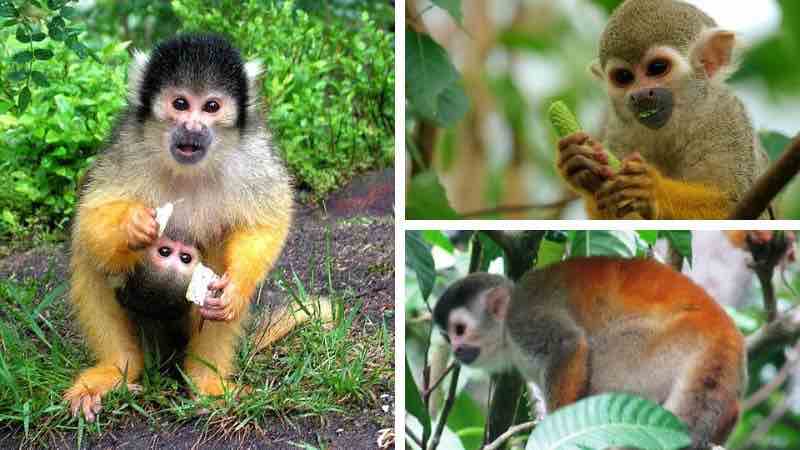
Marmoset monkey, squirrel monkey or pygmy marmoset
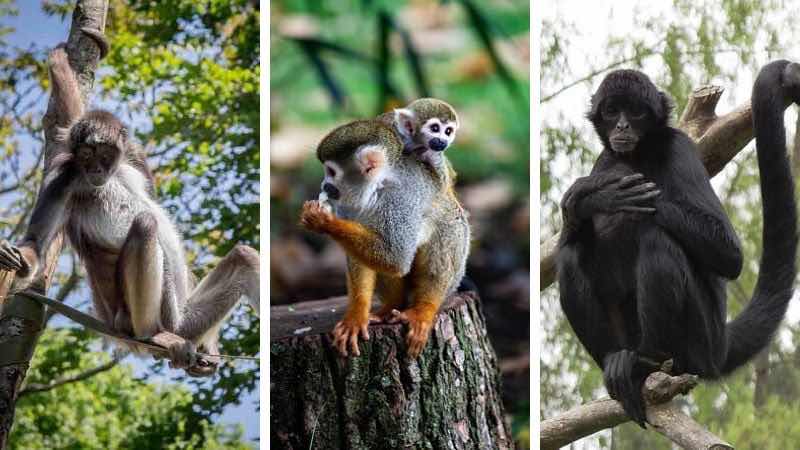
Spider monkey
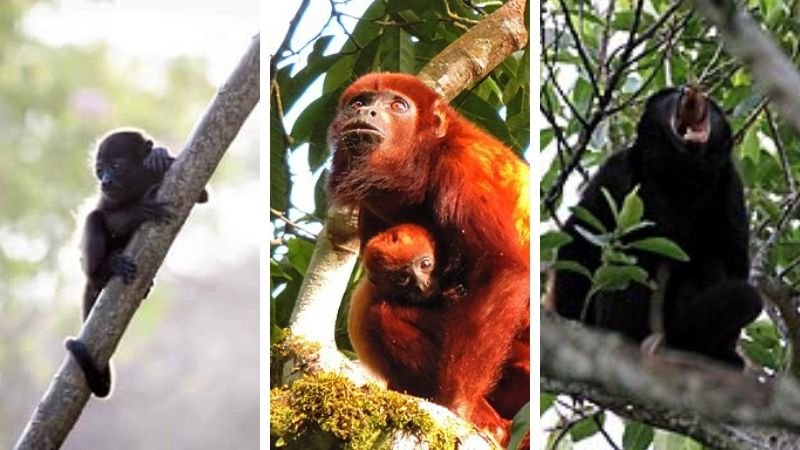
Howler Monkey
There is also the so-called Friar, Friar or Titi Monkey (Saimiri boliviensis, S. scireus). A small monkey, approximately 30 cm long and 1.4 kg in weight, which has brown fur and a black tail and snout, which has a kind of white mask.

Another well-known species is the Machín, Capuchin (Cebus albifrons). With light brown fur, long hair that covers his head like a hood, which has earned him the name of capuchin.
You can also find in the Amazon region the white-bellied Maquisapa monkey (Ateles belzebuth), the Black Maquisapa (Ateles paniscus), the Black Huapo (Pithecia monachus), the Looncito (Leontocebus rosalia) and the howler monkey, among others.

The best known marsupial is the common opossum (Didelphis marsupialis) in Ecuador called Raposa , in Colombia Faro or Chucha and in Venezuela Rabipelado.

The Amazonian mammal that you see in the photo has an elongated body, 45 to 60 cm long, unpleasant in appearance, similar to a large rat, grayish to brown or black fur, long tail and hairless, nocturnal and lonely.
It is an opportunistic omnivorous animal and feeds mainly on insects , earthworms, small vertebrates including snakes , frogs and rodents.
Canids
The canids (Canidae) are a family of carnivorous mammals whose main characteristics include a long and thin snout, as well as a slender body.
Among the canids that inhabit the Amazon we can mention the Achuni Maman (Procyon cancrivorus) . Which has gray fur, a long tail and a pointed snout, but larger than a wild dog, due to its corpulence, since it can weigh up to 100 kilos.

In the Peruvian Amazon they call it Perro Conchero. It is solitary, especially at night, when it goes hunting.
There is also the short-eared fox, short-eared dog, bush dog or jungle dog (Atelocynus microtis) , a canid typical of South America. It measures from 70 to 100 cm in length of body and 30 cm of tail, weighs up to 9 kg. It has short, agile legs and short, rounded ears.

This canid is distinguished by its fox-like snout and thick tail. Its fur ranges from black to reddish gray. It lives in the tropical rainforest, in the Amazon River basin in Bolivia , Brazil , Peru , Ecuador , and Colombia .
Equids
February 15, 2020
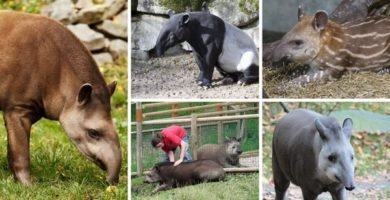
South American Tapir (Tapirus terrestris)
Among the most representative mammals of the Amazon jungle is the tapir or tapir ( Tapirus terrestris ) , which is considered an equine due to its relationship with horses, zebras, rhinoceroses and hippopotamuses. We have dedicated a special section to this herbivorous and fruit-eating animal that the conquerors once called “great beast” and that is considered sacred in some Amazonian cultures that we invite you to discover.
Endangered Species
More than 6,000 km² of forest was destroyed in 2011 alone. Indiscriminate hunting, illegal logging , fires , and mining are some of the human activities that put these species at risk.
Capybara , capybara, capybara are some of the names by which the (Hydrochaeris hydrochaeris) is known, the largest rodent (1 meter) and weight (60 Kg) in the world.

This mammal from the Amazon lives in flooded areas, its head is small, with rough fur, colored between yellowish and reddish brown. Its gestation period is four months and it gives birth to 2 to 8 pups.

Squirrels also inhabit the Amazon : Shitipu known in some areas as Ardita and the little squirrel (Microsciurus flaviventer). Both feed on seeds and nuts .
August 22, 2022

Agouti, Añuje or Guatusa (genus Dasyprocta spp.)
October 11, 2020
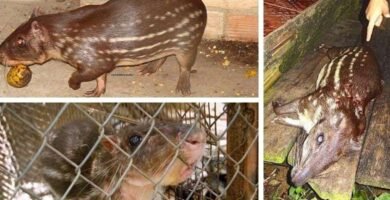
Lowland Paca or Agouti Paca (Cuniculus paca)
May 8, 2020
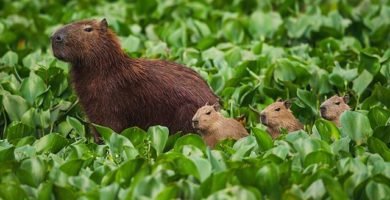
Capybara or chigüiro
Dasipodidae

Another animal present in the Amazon sometimes confused with a rodent is the armadillo ( Dasypus novemcinctus ) and the giant armadillo ( Priodontes maximus ) both of which are dasipodids . They are characterized by having a slightly flexible, semi-oval shell, with a very long tail and short limbs and very small legs.
Aquatic mammals of the basin
One of the largest aquatic mammals is the Manatee (Trichechus inunguis) , which can measure up to 4 meters long and weigh close to 500 kg. Its body is gray, with white spots on the belly.
March 20, 2020

The Amazonian manatee (Trichechus inunguis)
This mammal inhabits the murky, slow-flowing waters of the Amazon and its tributaries, feeding mainly on surface vegetation such as herbs and fish .
Two species of manatee are found in the Amazon basin, at least in Colombia and Venezuela : T. inunguis, or Amazonian manatee, and T. manatus, or West Indian manatee .
May 14, 2020

Giant Otter
In addition, within the species of aquatic mammals are the Northwest Otters (Lutra longicaudis, L. annectens, L. inarum) and the Giant Otter (Pteronura brasiliensis) both protected for being in danger of extinction.
November 13, 2019
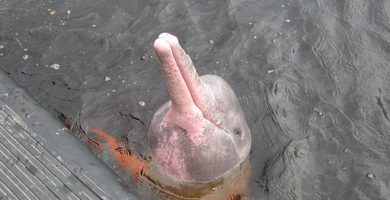
Amazon River Dolphin – Facts, Diet, Habitat, Species and more!
Another of the mammals that inhabits the Amazonian rivers is the Dolphin (Inia geoffrensis). Some also call them river dolphins. It is the largest of the plastinitidae family, a family of dolphins that lives only in fresh water.
June 12, 2020
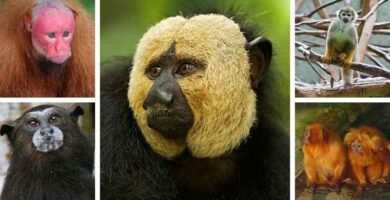
12 Amazon Rainforest Monkeys – Endangered Species ⚠️
A vast variety of monkeys inhabit the Amazon jungle, among which we can mention the Choro Monkey (Lagothrix lagotricha, L. flavicaudia) is brown, black or reddish in color, about 70 cm long and 10 Kg in weight. It is hunted for food, which places it in danger of extinction.

Also in the Amazon is the Cotomono (Alouatta seniculus) reddish howler monkeys that move with great agility among the trees. The spider monkey with its long limbs and prehensile tail. Its meat is consumed by residents of the region.
April 18, 2020
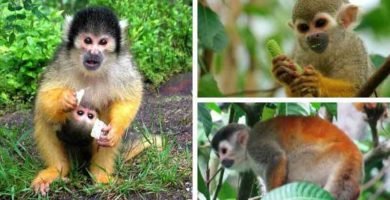
Marmoset monkey, squirrel monkey or pygmy marmoset
April 16, 2020

Spider monkey
April 14, 2020
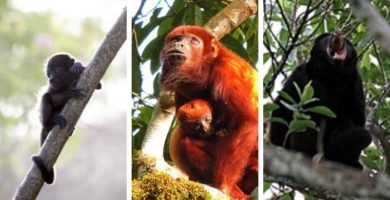
Howler Monkey
There is also the so-called Friar, Friar or Titi Monkey (Saimiri boliviensis, S. scireus). A small monkey, approximately 30 cm long and 1.4 kg in weight, which has brown fur and a black tail and snout, which has a kind of white mask.

Another well-known species is the Machín, Capuchin (Cebus albifrons). With light brown fur, long hair that covers his head like a hood, which has earned him the name of capuchin.
You can also find in the Amazon region the white-bellied Maquisapa monkey (Ateles belzebuth), the Black Maquisapa (Ateles paniscus), the Black Huapo (Pithecia monachus), the Looncito (Leontocebus rosalia) and the howler monkey, among others.

Marsupials
References
- PAGLIA, AP, FONSECA, GAB, RYLANDS, AB, HERRMANN, G.,
AGUIAR, LMS, CHIARELLO, AG, LEITE, YLR, COSTA, LP,
SICILIANO, S., KIERULFF, MCM, MENDES, SL, TAVARES,
VC, MITTERMEIER, RA & PATTON, JL 2012. Annotated List Two
Mammals of Brazil / Annotated Checklist of Brazilian Mammals. 2nd ed.
Occasions. Dad. Conserve Biol. Conservation International, Arlington. - Seas, MA (1992). Neotropical mammals and the myth of Amazonian biodiversity. Science , 255 (5047), 976-979.
- da Silva Santos, Fernanda; Mendes-Oliveira, Ana Cristina
Diversity of medium and large mammals in the Urucu River region, Amazonas, Brazil Biota Neotropica, vol. 12, no. 3, September, 2012, p. 282-291. Virtual Institute of Biodiversity of Campinas, Brazil.

Daniel Osorio holds a BA in Social Communication with a mention in Communication for Humanistic Development (Universidad de Los Andes, 2005). Film and TV director and screenwriter. Specialist in Digital Marketing (SEO, SEM, Adwords, Adsense). General Manager (CEO) at DMT Agency. He is the founding editor of the portal delamazonas.com among others.
Related Posts
December 14, 2019

Amazonian myths and legends about ayahuasca
November 30, 2019
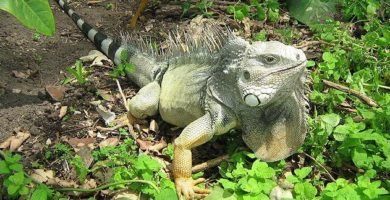
Iguana – 7 Unique Species From Central and South America
November 25, 2019

Brazil Nut (Bertholletia excelsa)
November 13, 2019

Amazon River Dolphin – Facts, Diet, Habitat, Species and more!
October 31, 2019

Amazon River tributaries
October 25, 2019
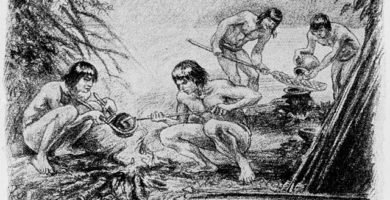
Curare: the key to a new scientific paradigm
October 24, 2019

Amazon Rainforest Reptiles: snakes, lizards and turtles of the region
October 24, 2019

Tourist Attractions of the Colombian Amazon Rainforest
This post is also available in:
![]() Español (Spanish)
Español (Spanish)

